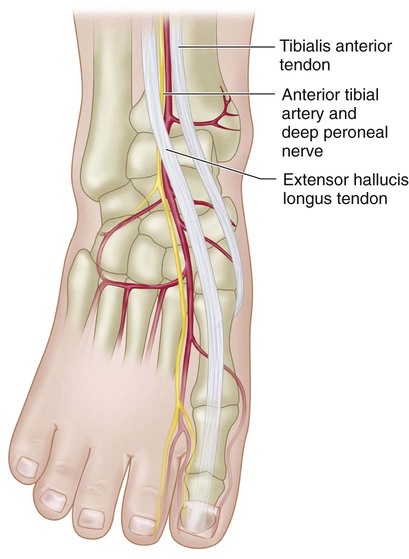• Figure 1 shows anteroposterior (AP) (Fig. 1A), mortise (Fig. 1B), and lateral (Fig. 1C) radiographs of a three-part triplane fracture. • Figure 2 shows AP (Fig. 2A), mortise (Fig. 2B), and lateral (Fig. 2C) radiographs of an extra-articular medial triplane fracture. • Coronal (Fig. 3) and axial views should be used to accurately measure displacement (stepoff and gap) of the distal tibial articular surface. • Furthermore, coronal, axial, and sagittal CT views enable the surgeon to preoperatively plan the placement of internal fixation (i.e., screw trajectory) based on the fracture pattern, thus allowing for limited exposure of the fracture fragments. Figure 4 illustrates the use of axial CT images in surgical planning of screw placement at the epiphyseal (Fig. 4A) and metaphyseal (Fig. 4B) levels.
Triplane Fractures
Indications
 Nondisplaced fractures are managed nonoperatively with a long-leg cast. Weekly radiographs should be obtained for the first 2 weeks after casting to assess for fracture displacement.
Nondisplaced fractures are managed nonoperatively with a long-leg cast. Weekly radiographs should be obtained for the first 2 weeks after casting to assess for fracture displacement.
 Fractures with ≥ 2 mm of intra-articular displacement require anatomic reduction to avoid articular incongruity and posttraumatic arthritis.
Fractures with ≥ 2 mm of intra-articular displacement require anatomic reduction to avoid articular incongruity and posttraumatic arthritis.
 Extra-articular triplane fractures extending into the epiphysis of the medial malleolus can occur. Since these fractures do not disrupt the tibial articular surface, nonoperative management can be used in fractures with 2 mm or more of displacement. Treatment guidelines for nonarticular distal tibial fractures can be used.
Extra-articular triplane fractures extending into the epiphysis of the medial malleolus can occur. Since these fractures do not disrupt the tibial articular surface, nonoperative management can be used in fractures with 2 mm or more of displacement. Treatment guidelines for nonarticular distal tibial fractures can be used.
Examination/Imaging
 Intra-articular triplane fractures of the distal tibia are anatomically complex Salter-Harris IV fractures usually consisting of a coronal fracture line in the metaphysis, a transverse fracture line within the physis, and a sagittal, intra-articular fracture through the epiphysis. On the anteroposterior (AP) view, the fracture appears to be a Salter-Harris III fracture; on the lateral view, it appears to be a Salter-Harris II fracture.
Intra-articular triplane fractures of the distal tibia are anatomically complex Salter-Harris IV fractures usually consisting of a coronal fracture line in the metaphysis, a transverse fracture line within the physis, and a sagittal, intra-articular fracture through the epiphysis. On the anteroposterior (AP) view, the fracture appears to be a Salter-Harris III fracture; on the lateral view, it appears to be a Salter-Harris II fracture.
 The mortise view of the ankle is the key plain radiographic view used to assess the sagittal, intra-articular fracture line in the epiphysis.
The mortise view of the ankle is the key plain radiographic view used to assess the sagittal, intra-articular fracture line in the epiphysis.
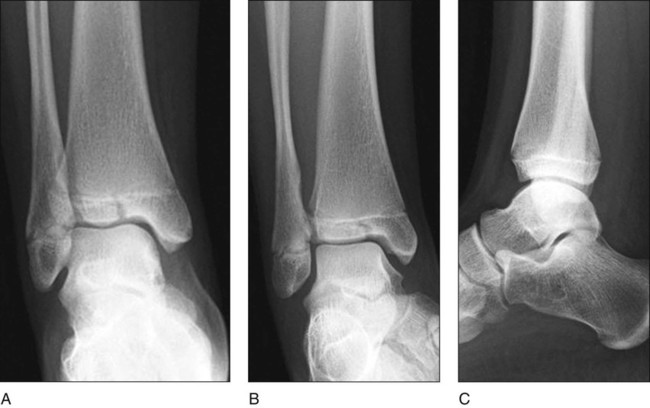
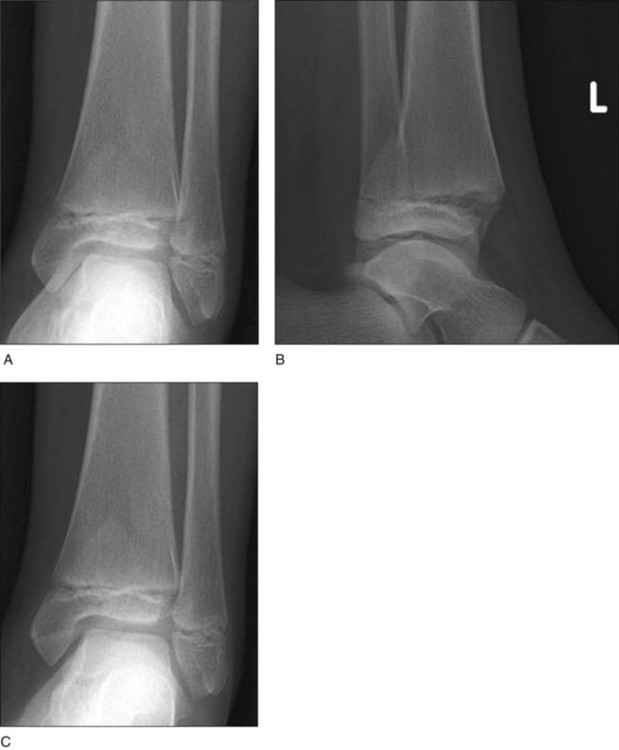
 Computed tomography (CT) permits identification of the number and location of fracture fragments.
Computed tomography (CT) permits identification of the number and location of fracture fragments.
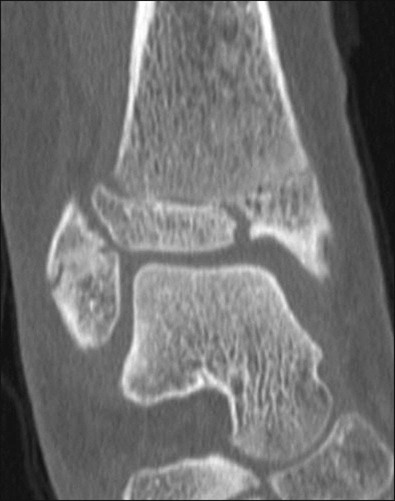
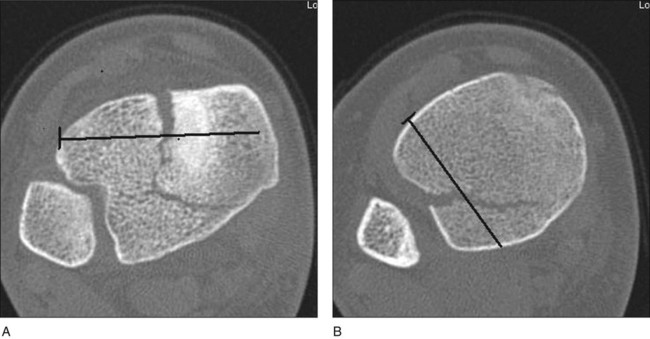
44: Triplane Fractures



